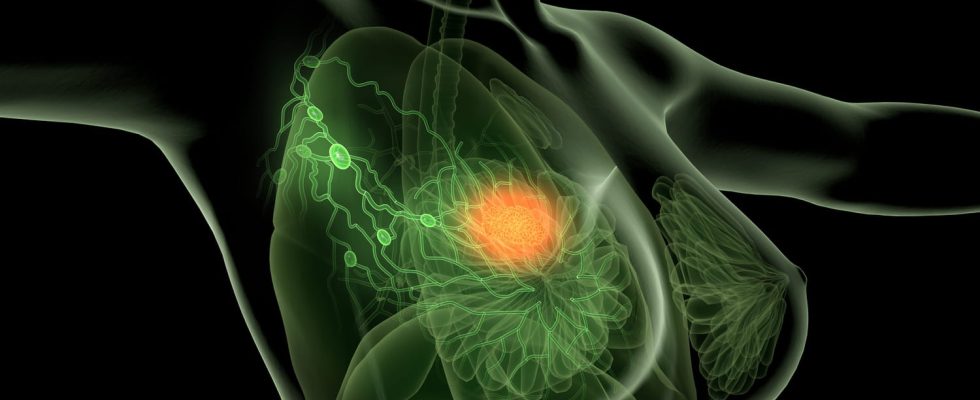If breast cancer is suspected, the axillary lymph nodes (located under the arm, in the armpits) are the first analyzed because they are the first to be invaded by cancer cells. This is why they are called sentinel lymph nodes.
The ganglia are involved in the defense of the immune system in the event of injury or infection. Axillary dissection consists of removing the lymph nodes located in the armpit, except for those closest to the arm, through a horizontal incision. Thus, not all the lymph nodes are removed (on average, a dozen). The exact number of lymph nodes collected will only be known after analysis of the sentinel lymph node.
The search for the sentinel lymph node
It is the lymph node(s) that are the first affected when the lymph nodes are affected. They are also the first to capture the products injected under the skin of the breast. This lymph node(s) may not be invaded. Certain allergic histories may contraindicate the method. It is done by injecting, before the operation, a weakly radioactive liquid (and possibly during the operation, a blue liquid), which “reveals” which lymph node is affected. The sentinel is analyzed for the first time during the operation.
- If it contains cancer cells, the cure is carried out immediately.
- If the sentinel examination does not find any cancer cells, the axillary dissection is not carried out.
The sentinel is then studied during a more in-depth analysis (results in approximately 2 to 3 weeks). If cancer cells are revealed then a complete cure will be done during a second operation.
